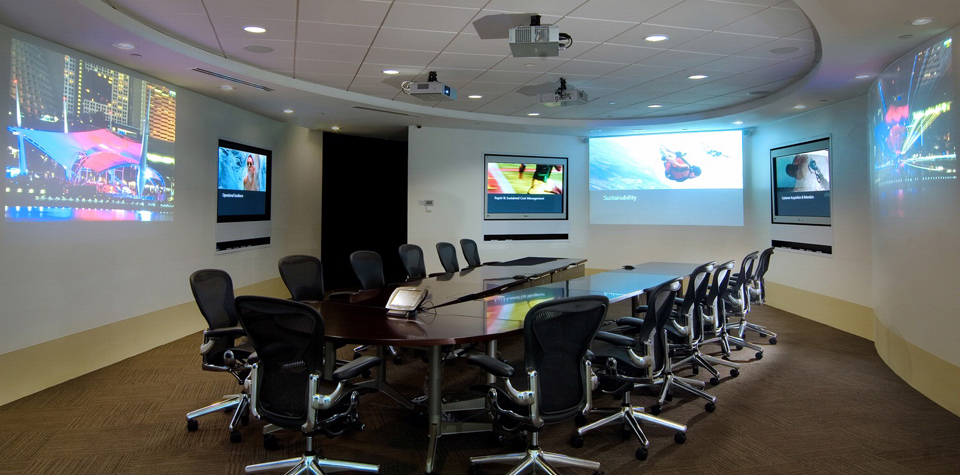Audiovisual service providers frequently offer web streaming, video conferencing, and live broadcast services.[2]
Computer-based audiovisual equipment is often used in education, with many schools and universities installing projection equipment and using interactive whiteboard technology.[3]
Aside from equipment installation, two significant elements of audiovisual are wiring and system control. If either of these components are faulty or missing, the system may not demonstrate optimal performance.
Wiring is a skill that not only requires proper cable rating selection based on a number of factors, including distance to the main rack, frequency and fire codes, but wires should also be out of sight, behind the walls and in the ceiling, when possible. System performance also depends on the integrity of the wires. If wires become exposed or mishandled during cabling, the signals may not transmit fluidly, which could compromise the quality. Wires should be neatly organized into the main component and properly labeled for easy reference.
Control refers to how the system will operate and how all the installed components will communicate. System automation devices from manufacturers like RTI, Crestron, Control4, AMX, Lightware and others are programmed to integrate the various components of the system and makes the system easy to use from various devices. For example, when programmed appropriately, a control system can allow a TV in zone one to automatically turn off when the music in zone two is turned on. Without proper control programming, the TV in zone one would stay on, even when the music in zone two is turned on.






